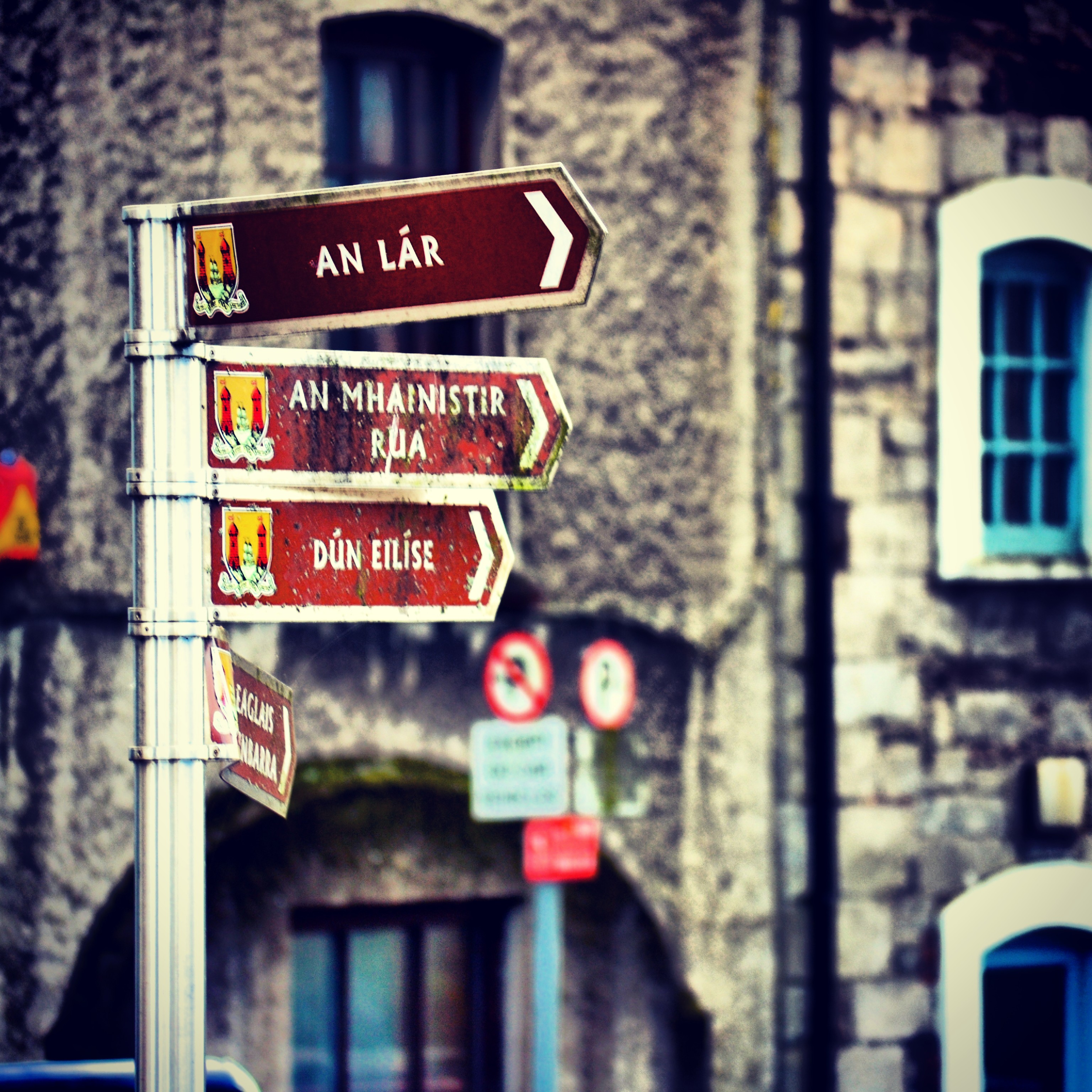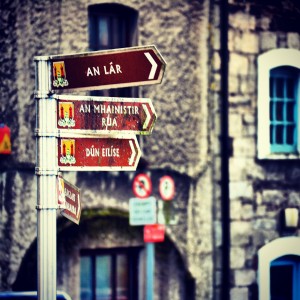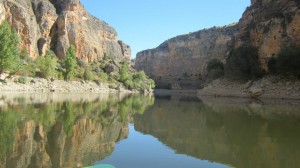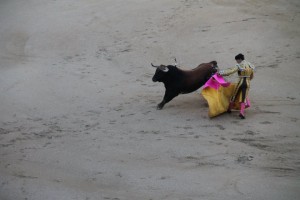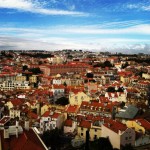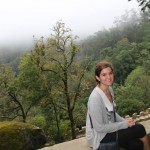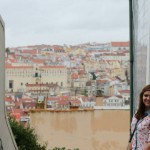As I’ve mentioned before, the word mzungu is used here in Uganda basically to refer to white people. This term comes from the swahili word wazungu, which means ‘wanderer’ or ‘traveler’. These last few weeks, my study abroad group and I have truly lived up to the title. Through several excursions and trips, we’ve traveled a great deal and gotten to see a lot more of Uganda. This, my dear readers, is the reason why I’ve been so distant. Even though you haven’t heard from me in a while, I know our relationship is strong, and that you’ll stick with me through the tough times. I have to do a lot of work on myself, I know. But I promise to keep in touch more often and listen to all your feeling and frustrations; we’ll make it through this if we just stick together.
Now that we’re done with that strange little tangent, let’s pick up where we left off. Last you heard of me, I was in Gulu having a grand old time. Just as I was feeling completely at home with my family in Gulu, we left for our first major excursion: Kitgum and the rural home-stay. Kitgum is the second largest city in Northern Uganda, which really isn’t saying much in terms of urban development for all you city folk. Despite the lack of skyscrapers and, well let’s just say it: pavement, Kitgum was a great place. We stayed in a hotel called “The Little Palace”, which lived up to its name. This place had stand-up showers, hot water, and FULL SIZED BEDS. We might as well have been at a Fairmont.
We stayed there for a few nights, and talked to a lot of people who worked in Kitgum during the war. One notable speaker was Bishop Ochola, a religious leader who helped to bring about peace talks and minimize the ravaging effects of the conflict. The Bishop preaches about the importance of forgiveness and reconciliation in post-conflict settings, which becomes truly inspiring once you discover he lost a wife and a daughter to rebel groups during the conflict. We attended a few more inspiring meetings with NGOs, another Acholi Chief (King), and communities working to rebuild their lives after years in Internally Displaced Persons (IDP) camps. After a few days, we were ready to embark on our rural home-stay
The rural home-stay is a unique part of SIT study abroad trips. For about four days, we live with new families in a rural community. During this period, we do not attend classes and have no contact with our professors or academic coordinators. Given the intensity of the experience, and the fact that we have to carry out research while we’re there, we take on the experience in groups. My home-stay partners were Karen and Tarryn, two girls from my trip.
Every one of the girls on this trip has a unique reason for ending up studying conflict transformation in Uganda, which has made our experiences and discussions amazing. Tarryn’s reason struck me as very interesting from the beginning; she told me she went to her study abroad counselor and said she wanted to live on the dirt floor of a mud hut for a semester. Well Tarryn it wasn’t a semester, but you got what you wanted.
We traveled to Amida, about thirty minutes outside of Kitgum on one of the bumpiest roads I’ve seen so far (that’s saying something), to meet Mr. Lam and his family, who would be hosting us for the next few days. Mr. Lam was a man of about 80 years who had an enormous family and a big heart. Also, he was kind of hard of hearing. Here’s a sample conversation:
[Me] Mr. Lam, how many children do you have?
[Mr. Lam] Yes, yes of course.
[Me] No sir, I meant ‘how many kids do you have’?
[Mr. Lam] Oh! Very many!
[Me] How many, just out of curiosity?
[Mr. Lam] Very, very, many!
[Me] Could you maybe provide an estimate, like, you know, a number?
[Mr. Lam] Hmmm, fifteen? maybe seventeen?
[Me] Oh Wow! You must have a lot of grandchildren then!
[Mr. Lam] No, she’s coming later.
[Me] Oh perfect. But I meant that I would be willing to bet you have many grandchildren as well.
[Mr. Lam] Oh yes, some are even having many kids.
[Me] So you have great grandchildren?
[Mr. Lam] No! I have already told you that she will not come until much later.
[Me] I’m so sorry Mr. Lam, sometimes I can’t hear very well.
[Mr. Lam] It is ok.
Anyway, Mr. Lam and his two wives (yeah polygamy is a thing here) were amazing people, and they helped us a lot with our research. It turned out that Mr. Lam was what we in Uganda call “A Head Honcho”. He knew everyone in town and everyone knew him, because he’d been a police officer and was now a politician in the Amida sub-county. His home was great too, we got our own mud hut, which we only had to share with a few frogs, some lizards, and what I truly hope was not a snake. Sadly, the experience came to an end, and we had to say goodbye to all of our new family members.
We went back to Gulu for a few days where we met even more amazing people. One of them was Komakech Patrick, a former LRA rebel who was abducted into their ranks when he was only nine years old. Although he was forced into participating in the conflict like so many others, he rose in the ranks and was even Joseph Kony’s personal body guard at one point. After ten years, he managed to escape and reintegrate into society. He was one of the founding members of Invisible Children, the NGO that made the Kony2012 video; which probably inspired you for twenty minutes and then pissed you off for a semester. I’ve developed a lot of mixed feelings about them since I’ve been here, so if you ever want to talk IC, holla at yo boy. (I promise not to say ‘holla at yo boy’ during the conversation). Anyways, Patrick has had some ups and downs since he returned from the bush, but he was happy to share them all with us and provide us with his unique world view.
It seemed like we’d only been in Gulu for ten minutes when it was time to leave again. This time, we were off to Kampala. Kampala, if you didn’t already know, is Uganda’s capital and largest city. Coming from Gulu, and especially our rural home-stay in Kitgum, the capital felt like a whole different ball game. Kampala has the kind of traffic I’ve only seen in Mexico City, with a disregard for traffic laws that even chilangos would be afraid of. (For all my gringo readers: Chilango refers to the inhabitants of Mexico City. An urban tribe well known for their road rage). Anyways, back to Uganda. Kampala has brand new buildings towering over sprawling slums, boda-bodas speeding by on sidewalks, a never-ending row of bars and restaurants scattered about, and more construction sites than completed structures. Unlike in the North, Uganda’s economic development can be seen in Kampala.
During our stay in Kampala, we visited two of Uganda’s parliaments (tribal and federal), spoke to lawyers, and took amazing classes with Ugandan professors at Makerere University. Makerere is Uganda’s national university. One of the students that I met on campus said the enrollment was close to 70,000. He might have been exaggerating a bit, but this place is enormous. Makerere is also extremely prestigious and has a beautiful campus Wandegeya, one of Kampala’s neighborhoods. Being on a college campus again made me realize how hard going back to school will be in January. As my friend Sarah “Flower Child” Vogel put it: “Our semester is like one giant field trip. I LOVE FIELD TRIPS.”
Speaking of the lovely ladies on my trip, Kampala got the best of us. Maybe it was the pollution, maybe it was bad luck, or maybe country kids just can’t hang with the city crowd, but this last week, every one of us fell victim to what I will now refer to as Kampalitis. Kampalitis consists of very many gastrointestinal, nasal, dermatological, and other symptoms that cause you to hate yourself and everyone around you. What I’m trying to say is we all got sick. It had to happen at some point I guess, but as a survivor of the catastrophic Kampalitis, let me tell you: It wasn’t pretty. Luckily enough, we got past it, and are now all in a state of recovery, and far away from Kampala. You win this time, big city; but we’ll be back for more.
Yesterday we traveled to Mbarare, a city in southwestern Uganda. Mbarare is in the region where Uganda’s president Yoweri Museveni was born. Not coincidentally, Mbarare is the fastest growing city in the country. We stopped here for two nights on our way to Rwanda, so we could go visit Nakevale Refugee Settlement, which is about two hours outside of the city. We visited it today, which was one of the most rewarding experiences on the trip so far. Nakevale is one of Uganda’s largest refugee camps, housing tens of thousands of exiled citizens from Rwanda, Burundi, the Democratic Republic of the Congo, Somalia, Eritrea, Ethiopia, Sudan, and for some reason, literally one dude from France.
When we got to the camp, we split up into groups and each spoke to people of one nationality so we could get a better idea of what life was like in the refugee camps. I spoke to Somalis, who welcomed us wholeheartedly, as most Africans do. In one of the most surreal moments of my life, we walked towards their settlement on dirt roads that wound through makeshift houses and semi-permanent shops. I walked hand in hand with a guy, because that’s just how muslim bros in Africa roll. We were surrounded on all sides by a group of beautiful Somali women wearing different combinations of headscarves, burkas and hijabs, along with men, children and elderly people, all trying to tell us their stories and get our attention. The current situation in Somalia may be one of the biggest geopolitical conundrums in modern history, and hearing these people’s stories was overwhelming.
I could go on and on about today, but I realize how long this post is. If you’ve made it this far, thank you; you must really care about me. Either that or you’re putting off something much more important. GO DO IT.
– I leave for Rwanda tomorrow. More on that soon –
